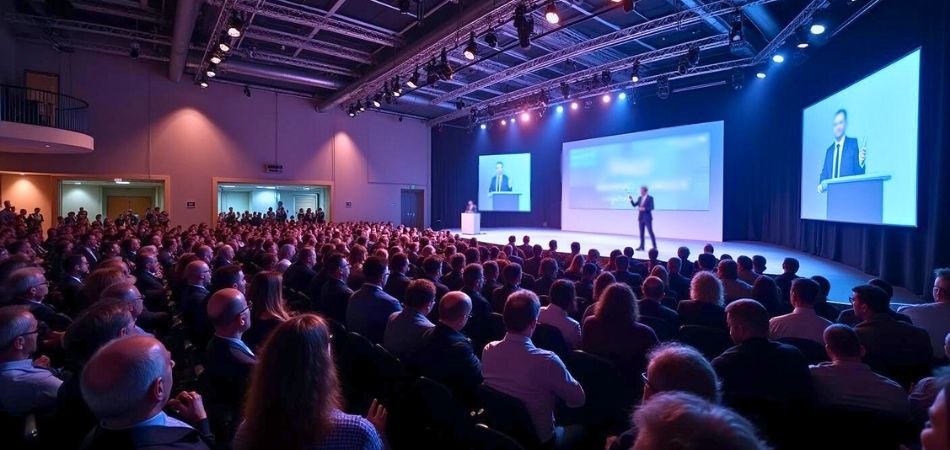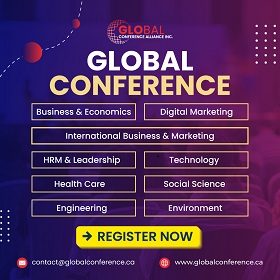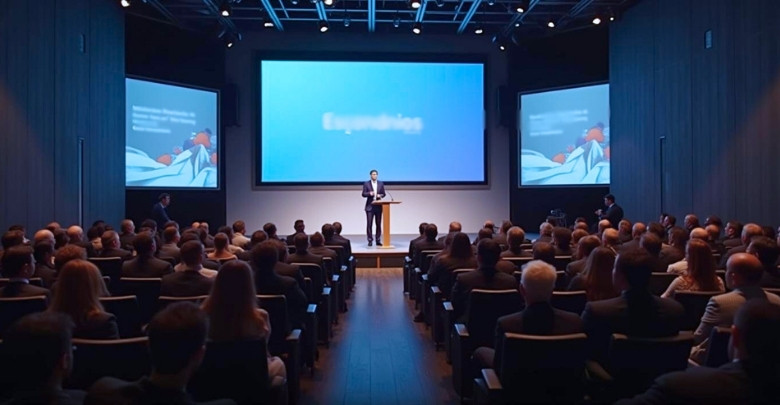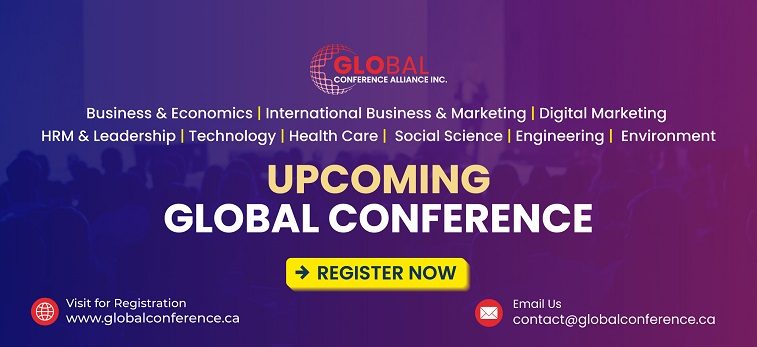Have you ever attended a professional event and been captivated by a speaker’s compelling presentation? These are often examples of conference style presentations, a formal yet dynamic method of sharing information with an audience. But, what is a conference style presentation exactly?
A conference style presentation is typically an oral style presentation. It is considered as a formal way to deliver information at professional events. It includes a structured format with an introduction, body, and conclusion, uses visual aids, engages the audience through questions, manages time effectively, maintains a professional demeanor, and incorporates technology to enhance clarity and interaction.
We have written a detailed guide to help you craft and perfect these presentations. So do follow us throughout the article.
What is a Conference Style Presentation? Key Features Explained
Delivering a presentation at a professional event requires a unique approach, balancing clarity, engagement, and formality. Conference style presentations are designed to inform, inspire, and captivate audiences in a structured yet impactful way. Let’s explore their defining features to help you master this presentation format.
Structured Format: From Start to Finish
A conference presentation follows a clear structure to ensure smooth delivery and comprehension. It starts with a powerful introduction, develops ideas in the body, and concludes with impactful takeaways. This organization helps audiences stay engaged while following the presenter’s main points effortlessly.
Structure adds polish and professionalism, helping you communicate complex ideas effectively. Each section should flow naturally into the next for maximum clarity. Remember, a cohesive structure builds credibility and leaves a lasting impression.
Professional Delivery Matters
Maintaining a professional demeanor is essential to creating a positive impression. Speak confidently, maintain eye contact, and dress appropriately for the event. These non-verbal cues complement your spoken words and establish your authority as a presenter.
Engaging with professionalism shows respect for your audience and content. Avoid distractions like filler words or overly casual language to maintain focus. A polished delivery enhances your credibility and keeps listeners invested throughout.
Visual Aids for Clarity
Strategic use of visual aids can strengthen your presentation by clarifying complex points. Charts, graphs, and slides simplify data and enhance understanding. They also add visual interest, making your content more engaging for varied audiences.
While visuals are powerful, moderation is key—avoid overcrowding slides with too much text or imagery. Stick to clear, high-quality visuals that support your main message. Balance text and graphics to maintain focus and accessibility.
Audience Engagement Techniques
Interactive presentations keep audiences interested and involved in the conversation. Use thought-provoking questions, polls, or activities to encourage participation. These methods make listeners feel valued and deepen their understanding of your topic.
Engagement creates connection and retention, ensuring your audience takes away meaningful insights. Adjust your strategies to suit your audience’s preferences and your topic’s complexity. Creating a two-way interaction builds trust and rapport effortlessly.
Effective Time Management
Time management ensures your presentation fits within the allotted limits without feeling rushed or incomplete. Practice your delivery to gauge pacing and adjust accordingly. Sticking to the timeline demonstrates respect for your audience’s time and event schedules.
Manage your content carefully to balance depth and brevity. Prioritize essential information and allocate time to each section evenly. A well-paced presentation keeps audiences attentive and leaves room for discussion.
Technology Integration for Impact
Technology can enhance clarity, interaction, and memorability in your conference presentation. Tools like live polling, videos, or virtual demonstrations make content engaging and modern. Leveraging technology appropriately shows your adaptability and creativity as a presenter.
Always test your tech setup beforehand to avoid glitches during your talk. Backup plans ensure seamless execution if unexpected issues arise. Proper use of technology makes your message impactful and relevant to today’s audience.
Closing With a Purpose
A strong conclusion leaves your audience with memorable takeaways. Summarize key points, reiterate your core message, and invite questions or feedback. Ending with a call to action encourages listeners to reflect and act on what they’ve learned.
Your closing should inspire further thought or application of your content. Aim to leave a lasting impression that resonates long after the presentation ends. A purposeful conclusion ties your presentation together effectively.
Mastering the art of a conference style presentation can open doors to professional growth and influence. It’s important to focus on structure, professionalism, engagement, and clarity when preparing for upcoming conferences or developing your skills for future opportunities. These strategies will help you deliver impactful messages that captivate any audience and leave a lasting impression.
Why is Oral Presentation Best Suited for Conference?
Conferences are dynamic events where ideas come to life through interaction and storytelling. Oral presentations excel in delivering impactful messages to diverse audiences. Let’s explore why this format remains the top choice for effective communication at professional events.
Personal Connection With the Audience
Oral presentations create a direct connection, allowing presenters to engage with their audience in real time. Eye contact and vocal tone build trust and make the message relatable. This interaction fosters a sense of authenticity that written formats often lack. Connecting personally ensures attendees feel involved and valued during the presentation.
Flexibility in Delivery
The spoken word allows for adjustments based on audience reactions, ensuring a personalized experience. Presenters can clarify complex points if they notice confusion or shift focus to engage better. This adaptability makes oral presentations uniquely effective for diverse professional settings. Flexibility keeps the content dynamic and responsive to audience needs.
Encouragement of Interactive Discussion
Oral presentations open the floor for questions, discussions, and immediate feedback from the audience. This two-way communication enriches understanding and makes the session more engaging. Encouraging discussions ensures attendees feel actively involved in the conversation. Such interactions often lead to deeper insights and collaborative learning opportunities.
Visual and Vocal Emphasis
Using tone, gestures, and visual aids, oral presentations emphasize key points better than static formats. Variations in voice keep the audience attentive, preventing monotony. Visual aids complement spoken words, making complex information easier to grasp. These elements work together to create a memorable and impactful presentation.
Time-Efficient Knowledge Sharing
Oral presentations allow presenters to deliver detailed information succinctly, saving time while maximizing impact. Presenters can distill key ideas without overwhelming the audience with excessive details. This concise approach respects the time constraints typical at conferences. Efficiency ensures the content remains engaging and purposeful throughout the session.
How to Present at Adhering to Conference Style?
Presenting effectively at a conference requires meticulous planning and execution to leave a lasting impression. A structured approach ensures clarity, professionalism, and engagement. Here’s an eight-step guide to help you master the art of conference presentations.
Step 1: Research and Organize Your Content
Start by deeply exploring your topic to develop a comprehensive understanding of the subject. Identify key points that align with your presentation goals and audience interests. Structure these ideas into an outline with a strong introduction, main body, and impactful conclusion. A well-organized presentation ensures logical flow and keeps your audience focused.
Step 2: Craft Compelling Visual Aids
Visual aids enhance your presentation but must be used thoughtfully to avoid distractions. Design slides with minimal text, impactful visuals, and relevant graphs to support your points. Avoid overcrowding slides with excessive data that can overwhelm your audience. Striking visuals should clarify ideas and keep the presentation engaging.
Step 3: Practice Timing for Smooth Delivery
Rehearse your presentation thoroughly to manage your time effectively and cover all essential points. Allocate specific durations for each section and include a buffer for unforeseen delays. Practicing ensures you maintain a steady pace and avoid rushing or exceeding the time limit. Conclude with time for audience questions to foster engagement.
Step 4: Connect With Your Audience
Establish rapport with your audience by maintaining eye contact and using open body language. Incorporate questions or activities to encourage participation and keep the session interactive. Active engagement shows confidence and helps you adapt to audience reactions in real time. A connected audience is more likely to stay invested in your message.
Step 5: Prepare for Technical Challenges
Technical mishaps can disrupt your presentation, so it’s essential to plan for contingencies. Test equipment like projectors, microphones, and presentation software before the event to ensure they function smoothly. Keep backups of your presentation on a USB drive and cloud storage. Being prepared minimizes stress and ensures a professional delivery.
Step 6: Master Your Delivery Style
Speak clearly and confidently to establish authority and hold your audience’s attention. Use vocal variations to highlight key points and maintain interest throughout the session. Pauses can be powerful tools to emphasize important information and allow your audience time to absorb it. A confident delivery leaves a lasting impression.
Step 7: Using the Q&A Session Effectively
While responding to audience questions, do so thoughtfully and respectfully, it helps you to build a strong connection. Listening carefully to each question allows you to provide clear, concise answers that showcase your expertise. Incorporating keynote speaker Q&A best practices, such as staying calm and focused, can enhance your professionalism. If you don’t have an immediate answer, acknowledge it honestly and offer to follow up later, reinforcing your credibility and respect for the audience.
Step 8: Reflect and Implement Feedback
After your presentation, take time to evaluate your performance and identify areas for improvement. Seek constructive feedback from peers or mentors to refine your delivery and content. Reflecting on what worked and what didn’t helps you grow as a presenter. Continuous learning ensures better results in future presentations.
Common Mistakes in Conference Style Presentations
Delivering a flawless conference presentation takes more than knowledge—it requires practice and attention to detail. Even experienced presenters can make mistakes that diminish the impact of their delivery. Recognizing these pitfalls is crucial to ensure your message resonates with the audience. Let’s explore the most common mistakes in conference presentations and how to avoid them.
Overloading Slides With Information
Slides crammed with excessive text or data overwhelm audiences and dilute your key points. When presenting, aim for concise, visually appealing slides. Audiences retain information better when visuals complement your speech rather than duplicate it. Instead of overloading slides, highlight key ideas and elaborate verbally during your presentation.
Poor Time Management
Running out of time or rushing through sections creates a disorganized and stressful experience for everyone involved. Always rehearse your presentation with a timer to ensure smooth pacing. Allocate extra time for questions or unexpected interruptions to maintain flexibility. Staying within your allotted time demonstrates professionalism and respect for your audience.
Ignoring Technical Preparations
Overlooking technical checks can lead to embarrassing disruptions during your presentation. Always test equipment like microphones, projectors, or software in advance. Bring backups for essential materials to prevent unexpected failures. Thorough preparation avoids awkward delays and ensures your delivery is consistent and professional.
Neglecting Audience Engagement
A one-sided presentation quickly loses its charm and fails to keep listeners engaged. Ignoring interaction opportunities such as questions or polls is a missed chance to connect. Many speakers unintentionally commit such common errors in conference presentation by focusing solely on delivering content. Including engaging activities creates a dynamic experience and makes your message memorable.
Failing to Adapt to the Audience
Not adjusting your presentation to suit the audience’s needs or knowledge level can reduce understanding. Researching your audience beforehand helps refine your content and tone. Adjusting your language and examples keeps your audience engaged and receptive to your message. Customization reflects your respect for the audience’s time and attention.
Tips for Creating an Engaging Conference Style Presentation
Creating a conference presentation that captivates your audience requires thoughtful preparation and a keen understanding of their needs. Engaging content, clear visuals, and effective delivery all play essential roles. Here are practical tips to ensure your presentation leaves a lasting impact.
- Start With a Hook to Grab Attention: Open with a striking fact, story, or question to immediately captivate your audience. This sets the tone and piques curiosity from the beginning.
- Organize Content With a Logical Flow: Structure your presentation into clear sections that transition smoothly. A well-organized flow helps audiences follow your ideas effortlessly and stay engaged.
- Incorporate Relevant Visuals Strategically: Use images, graphs, and videos to complement your speech. Relevant visuals enhance understanding and keep the audience visually stimulated throughout.
- Practice Active Audience Engagement: Encourage participation through questions, polls, or small activities. Interaction makes your presentation dynamic and ensures the audience feels involved and valued.
- Focus on a Strong Delivery Style: Speak clearly, modulate your tone, and maintain eye contact. Your delivery style plays a major role in holding audience’s interest.
- Rehearse to Perfect Timing and Pacing: Practice your presentation multiple times to ensure smooth delivery. Manage your time effectively to avoid rushing or running over.
- End with Impactful Takeaways: Conclude by summarizing key points and delivering a memorable message. A strong ending leaves a lasting impression and reinforces your ideas.
Frequently Asked Questions About Conference Style Presentation
Understanding the nuances of a conference style presentation can help you create impactful and professional sessions. Here are some frequently asked questions and their answers to help clarify key aspects of this presentation format.
How Does a Conference Style Presentation Differ From Other Presentations?
A conference style presentation is more formal than casual presentations, often following a structured format with an introduction, body, and conclusion. It focuses on professionalism, audience engagement, and clear messaging, usually intended for professional events or large audiences.
Why Is Audience Engagement Crucial in Conference Presentations?
Audience engagement keeps listeners actively involved, ensuring they absorb the key points of your presentation. Interactive methods like polls, Q&A sessions, or storytelling make your presentation memorable and develop a stronger connection with your audience, enhancing the overall experience.
What Types of Visual Aids Work Best in These Presentations?
High-quality slides, charts, and videos are effective visual aids for conference presentations. They simplify complex ideas, maintain audience interest, and support verbal content, ensuring clarity without overwhelming viewers with excessive text or irrelevant graphics.
How Important Is Rehearsing Before a Conference Presentation?
Rehearsing ensures smooth delivery, proper pacing, and time management, making your presentation appear polished and professional. It also helps you anticipate questions, refine transitions, and build confidence, ensuring a more impactful connection with your audience.
Can Technology Enhance a Conference Style Presentation?
Technology like live polling tools, virtual demonstrations, and advanced visuals add depth and interactivity to your presentation. Used wisely, it can clarify complex topics, keep audiences engaged, and make your session stand out as modern and innovative.
Final Thoughts
Mastering the art of delivering impactful conference presentations requires careful planning, structured delivery, and a focus on audience engagement. Understanding what is a conference style presentation? involves recognizing its formal structure, reliance on professional delivery, and use of technology and visuals to enhance clarity.
By avoiding common mistakes, adjusting your presentation to your audience, and practicing your delivery, you can ensure a smooth and memorable experience. Whether you’re presenting to inform, inspire, or persuade, these strategies help you connect effectively and leave a lasting impression. Use these insights to advance your skills and make every presentation a resounding success.








